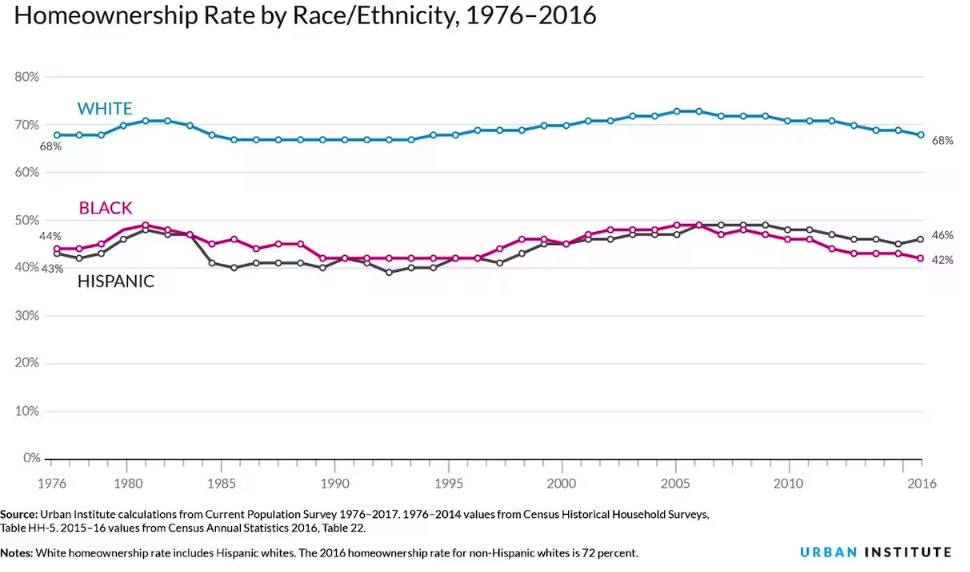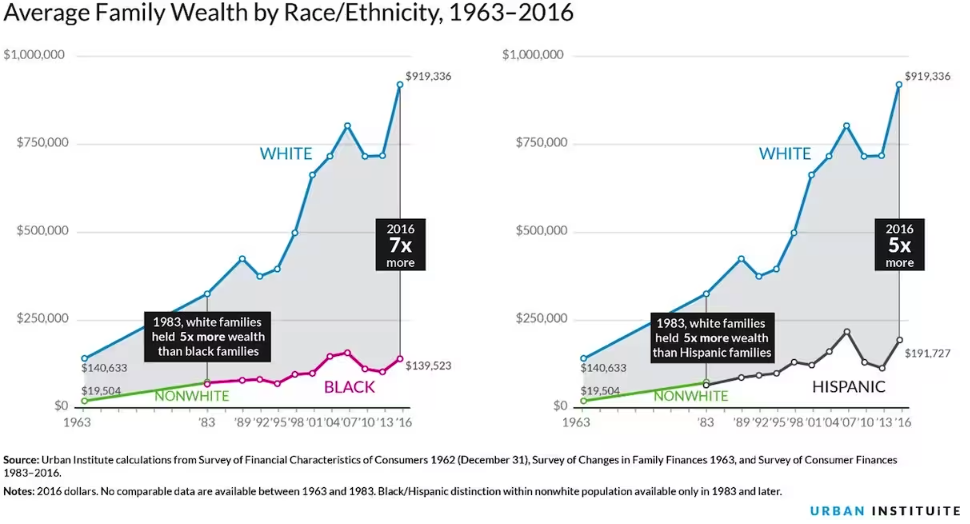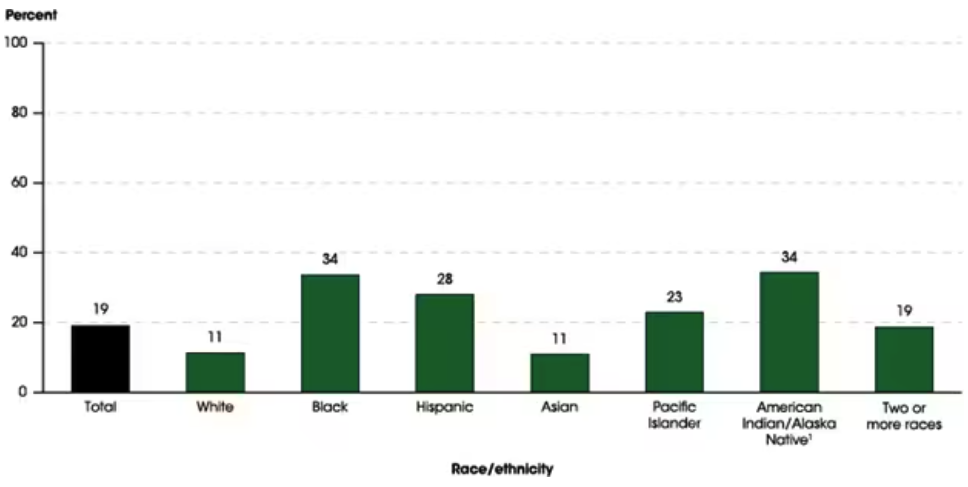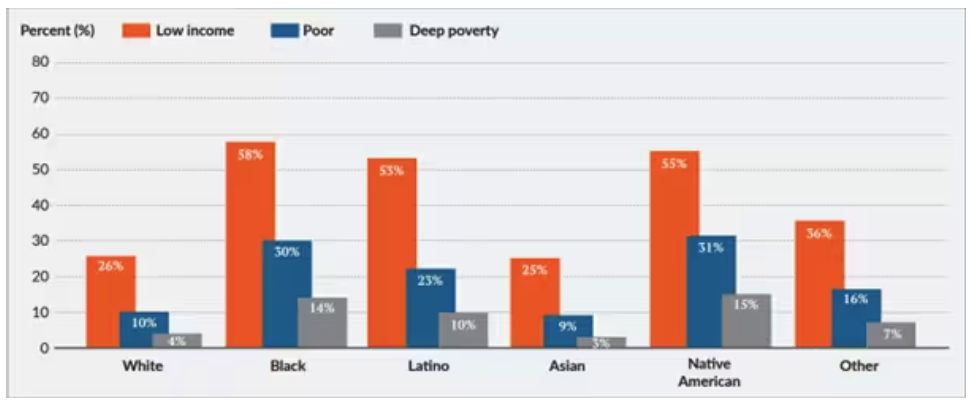Answer Sheet: The Element of Suspense in Supreme Court’s 2023 Affirmative Action Ruling
In the fall, the U.S. Supreme Court held hearings on cases challenging affirmative action programs at Harvard University and the University of North Carolina at Chapel Hill — and after hours of argument, it seemed clear that these programs are likely to be ended by a majority of the justices.
With court watchers predicting a ruling against the universities this year, the question remains how broad that ruling will be. How will it affect other colleges and flagship state universities? Will the court allow racial proxies that favor White students to stand while eliminating affirmative action programs aimed at bringing more minorities onto campuses?
The two separate cases were brought by plaintiffs seeking to end affirmative action programs at Harvard and UNC-Chapel Hill that are used to create a diverse student population on campus. Race-based affirmative action has been losing support in the United States for some time despite research showing that diversity in schools helps low-income students as well as wealthier ones.
Students for Fair Admissions is the plaintiff in both cases. Its court filings allege that Harvard and UNC-Chapel Hill award large racial preferences to African American and Hispanic applicants, to the detriment of White and Asian American applicants and ignore alternative admissions tactics that might preserve student diversity. Federal trial courts sided with the universities, which deny the allegations
In this post, Kevin Welner, director of the National Education Policy Center at the University of Colorado at Boulder’s School of Education and a professor specializing in educational policy and law, looks at this case in depth. He recently wrote on this blog about how a Supreme Court ruling appears to lay the groundwork for religious charter schools.
By Kevin Welner
Nobody has (yet) leaked the Supreme Court’s upcoming decisions concerning challenges to the affirmative action policies of Harvard and the University of North Carolina, as happened last year with a case that ended with the overturning of Roe v. Wade, which guaranteed women the constitutional right to abortion.
But there’s no need for such a leak. We already know the decision, and as a practical matter we’ve known it for years. Like a quarterback about to throw an interception, the court has long been brazenly telegraphing its determination to declare affirmative action unconstitutional.
Accordingly, on the late-spring day when the Harvard and UNC decisions are released, the sun will rise and (almost as predictably) six justices will be in the majority, voting to ban any consideration of applicants’ race or ethnicity.
But there nevertheless remains an important element of suspense, and it concerns the consideration by admissions offices of factors strongly correlated with race, such as where students live and whether they grew up in poverty. Will the court’s majority attempt to stop the use of such racial proxies?
Proxies can be powerful tools. Knowing your Zip code allows researchers to make an educated guess about, among many other things, your approximate wealth and income, as well as your likely race or ethnicity — and your school’s average test scores.
It’s not just Zip codes. Proxies are all around us. Republicans target their digital advertising at people who eat at Chick-fil-A and Cracker Barrel, and Democrats aim theirs at people who shop at Trader Joe’s and Whole Foods Market. For most of us, that’s not particularly troubling. But what if an insurance actuarial uses a Zip code as a proxy for race — with higher car insurance costs in minoritized neighborhoods?
In fact, any time a policy or practice depends on where you live, the race-proxy emerges. More broadly, wealth and income are also race-proxies in the U.S., as is the school a child attends.
In the recent Supreme Court oral arguments about affirmative action, this issue of proxies came up in the form of “race-neutral” alternatives to race-based affirmative action. These alternatives are policies that use, for example, a student’s high school attended or socio-economic status to try to create diversity in admissions. A university might justify these policies for reasons that are facially distinct from any racial-diversity goals. But it’s very likely that such policies have been adopted — pursuant to the Supreme Court’s own guidance — as race-neutral ways to avoid further segregation of predominantly White institutions.
One characteristic of most of these proxies is that we know that they are, in fact, proxies. We know that neighborhoods and high schools are segregated, and we know that race and poverty are highly correlated. So it’s entirely predictable that using high school attendance or socio-economic status is likely to serve a racial diversity goal. In the past, the court’s majority largely welcomed these race-neutral proxies. In fact, the conservative wing of the court repeatedly cited the available option of race-neutral proxies as a reason why the explicit consideration of race is unnecessary. The plaintiffs challenging Harvard University’s affirmative action plan similarly stressed the availability of such race-neutral approaches.
But it’s far from clear that the right-wing majority of the current court will agree. During oral arguments, the justices’ questions repeatedly probed this question of proxies. Some commentators have urged the court to adopt a strict rule regarding proxies: A race-neutral alternative to race-based affirmative action is unconstitutional if the university would not have chosen to adopt it but for its capacity to advance a racial-diversity goal.
If the court were to adopt that rule, it’s easy to see future plaintiffs arguing that, following the court’s decision to ban the consideration of race in affirmative action programs, any race-neutral policy change that increases racial diversity is presumptively adopted for impermissible reasons. After all, if the approaches had sufficient merits on their own, wouldn’t they have been incorporated into admissions criteria before the new Supreme Court decisions? In any case, many colleges and universities have openly spoken of the racial-diversity benefits of such proxies; those statements would be introduced as evidence of an impermissible use of race.
But there’s something extraordinarily perverse about this proxy discussion: In a society with a long and harmful history of racial discrimination that has massively impacted the distribution of resources and political power, laws and policies that are facially race-neutral will disproportionately and inequitably bestow benefits on White people. If a benefit is distributed based on neighborhood residence, on formal education, or on income or wealth, then White people will be relatively advantaged. And that advantage is an entirely predictable outcome of the nation’s long history of discrimination.
As just one example, consider the mortgage interest deduction, which allows a federal income-tax deduction for the amount paid in interest on a home loan. According to the New York Times, “In addition to being one of the oldest federal tax deductions, the mortgage interest deduction is the largest one.” It’s also a benefit that is inequitably distributed. A 2020 Congressional Research Service analysis found that over 63 percent of the benefits from this deduction were taken by those in households earning over $200,000 per year. These beneficiaries were overwhelmingly White because of past discrimination around homeownership, employment and other areas.
The 1913 law creating this benefit was not expressly targeted to White people; it didn’t have to be. The legislators who passed the law knew or should have known that a racial proxy was at work.
Beyond income, race in the United States is highly correlated with important factors such as wealth, home value, area of residency (housing segregation), parents’ educational level, employment and unemployment, homeownership and renter status, and neighborhood resources. It’s also correlated with social and political factors such as friend groups and voting patterns. In schools, race is correlated with access to AP and IB courses, teachers’ years of experience, fellow students’ race, and college success. Accordingly, social scientists in the United States can safely forecast that a data set’s “race” field will be highly predictive of a wide variety of outcomes.
Within the research community, the reasons underlying this predictive power of race are well established. In a highly readable 2017 book, “The Color of Law: A Forgotten History of How Our Government Segregated America, author Richard Rothstein brought together the part of that research concerning housing segregation. The Urban Institute offers a much shorter explainer. In a nutshell, the nation has repeatedly disadvantaged its Black population as regards housing:
- Under chattel slavery, Black people were removed from their homes, denied the right to own property, and were in fact designated as property themselves.
- Jim Crow laws and associated violence prevented Black people from buying homes in non-Black neighborhoods. This included zoning ordinances, restrictive covenants in home deeds (excluding non-White buyers), and lending discrimination including redlining.
- Related to redlining, Black Americans were overwhelmingly excluded from government-backed mortgages and farm loans. The New Deal Federal Housing Administration would not insure mortgages in Black neighborhoods.
- Black Americans were also overwhelmingly excluded from government land gifts and grants, intended to open up frontiers (and displace Native Americans).
- Federal transportation projects added a large blow to Black neighborhoods and to segregation, by facilitating the growth of suburbs while frequently destroying the homes of Black residents.
- The federal government’s urban-renewal projects of the 1960s and 1970s destroyed more homes of Black residents, moving many of these displaced residents to public housing.
- Blockbusting in the 1960s and 1970s, as well as steering by realtors (and lenders) continuing to the present day have undermined attempts to create racially integrated neighborhoods.
Racial disparities in homeownership have not substantially changed since the mid-1970s, when the Census Bureau started collecting these data. And keep in mind that these ownership disparities don’t account for additional inequalities in the value of those homes.

(Reproduced with permission, from https://apps.urban.org/features/wealth-inequality-charts/) (Urban League)
Harmful zoning policies continue today, as does outright discrimination, as illustrated by housing audits and by this high-profile incident involving the loan-appraisal process. But my intent here is to focus on the lasting impact of past housing discrimination, since home equity is the main asset for most households, and this wealth is passed between generations. Past discrimination in housing has clear effects on present-day wealth.
In 2006, researchers estimated that institutional biases in housing had cost the then-current generation of Black Americans about $82 billion (see p. 9). This question was revisited in 2018 by other researchers, who used updated numbers reflecting appreciation, as well as a somewhat different method, and arrived at a figure of $156 billion — almost twice the 2006 figure. Using just these rough calculations and averaging the figures out to the 40 million Black adults and children in the United States, we see an individual-level loss of thousands of dollars, just due to these inequitable and discriminatory housing policies.
Yet redlining and other forms of housing discrimination did not just drive wealth inequality. They have also impacted, among other things, health and environmental racism, neighborhood resources and social capital, neighborhood safety, school funding, and school segregation. And once we go beyond redlining and other housing-focused discrimination — adding in discrimination in areas such as employment, education, contracting, voting, transportation, health care and nutrition, and criminal justice — we arrive at a predictable outcome for accumulated wealth, as shown in the following graphic from the Urban Institute.
 (Reproduced with permission, from https://apps.urban.org/features/wealth-inequality-charts/) (Urban League)
(Reproduced with permission, from https://apps.urban.org/features/wealth-inequality-charts/) (Urban League)
Using median numbers results in the same patterns. The most recent data show White households in the United States having a median wealth of $188,200, almost eight times the $24,100 for Black households. These wealth numbers directly impact childhood poverty, which has the predictable racial overlay, as shown in this figure from the National Center for Educational Statistics.
 Child Poverty Rates (SOURCE: U.S. Department of Commerce, Census Bureau, American Community Survey (ACS), 2016. See Digest of Education Statistics 2017, table 102.60.)
Child Poverty Rates (SOURCE: U.S. Department of Commerce, Census Bureau, American Community Survey (ACS), 2016. See Digest of Education Statistics 2017, table 102.60.)
A more complete picture is provided if we also consider families that are near-poor and those that live in deep poverty. Over half of Latino, Black and Native American children are living below or near the poverty level.
Source: Koball, H., Moore, A., & Hernandez, J. (2021). Basic Facts about Low-Income Children: Children under 18 Years, 2019. National Center for Children in Poverty. https://www.nccp.org/wp-content/uploads/2021/03/NCCP_FactSheets_All-Kid…. Reproduced with permission. As set forth in the report, poor (the federal poverty threshold) family of three with one child in 2019 had an annual income below $20,578. A “low-income” family of three with one child had an annual income below $41,156. A “deep poverty” family of three with one child had an annual income below $10,289. (NCCCP/National Center for Children in Poverty)
These numbers are even more shocking when focused on children attending public school. Only 7 or 8 percent of public school students in these groups (Latino, Black and Native American children) attend a school where under 25 percent of the students are eligible for free- or reduced-price lunch. Living and learning in an environment of concentrated poverty takes a toll.
To understand why these correlations and the resulting racial proxies present a serious issue for the Supreme Court, consider the 1915 case of Guinn v. United States. The court’s decision in Guinn held that so-called grandfather clauses are unconstitutional. Post-Reconstruction, the racist White leaders of former Confederate states came up with a broad package of ways to deny the vote to Black citizens. One way they did so was through laws that gave the right to vote (or the right to avoid other Jim Crow requirements such as poll taxes) only to those who could vote prior to 1866 or 1867 and their lineal descendants — effectively excluding Black people. These grandfather clauses were facially race-neutral, but they were clear proxies for race. If the court allowed grandfather clauses, it would eviscerate the 15th Amendment.
Other Jim Crow laws — including those poll taxes themselves — involved similarly transparent subterfuges. If courts should disallow those bigoted laws (and they certainly should), why should they not also disallow race-neutral policies that use proxies to help address racial isolation in colleges and universities? That is, once the Supreme Court hands down its anti-affirmative-action decisions in the Harvard and UNC cases, why shouldn’t the court also prevent that ruling from being subverted by the use of racial proxies?
The answer is obvious once we understand that racial proxies — ones that favor White college applicants — are already in play in the admissions process. When colleges consider measures such as high school grades, honors-level courses, SAT scores, and extracurricular activities, they are relying on applicants’ achievements that substantially depend on opportunities that the applicants have had throughout their lives. These are indeed real achievements, but they cannot be separated from unequal opportunities tied to racial discrimination. Teacher experience and preparation, books in the home, school and neighborhood resources, parents’ ability and availability to provide assistance with school, summer enrichment activities, food and housing security — all of these help create the opportunity gaps that then create the achievement gaps evident in college applications. These are racial proxies, since they are unevenly distributed in a way that is racially correlated, and they are the result of discrimination.
Will the current Supreme Court majority allow facially neutral criteria that favor White applicants but disallow facially neutral criteria that favor non-White applicants? Are racial proxies somehow more acceptable if they’re deeply embedded in our economy and institutions due to the nation’s long-standing history of discrimination?
That outcome seems absurd. Yet it’s also likely where at least some of the majority will land. These are dark days, with the Supreme Court’s core legitimacy being justifiably questioned by the legal community and the public. Although the court’s black robes provide a veneer of judicial deliberations, it’s difficult to see the current court through anything other than a political lens, and the majority has not hesitated to embrace its political leanings and outcome objectives.
The six-justice majority does have other options, however, even if it is determined to eliminate the direct use of racial considerations in college admissions. Instead of the “but for” rule, the court could prohibit criteria that are not explainable in anything other than racial terms. This is the reasoning that guided the court in the Guinn case and in a 1993 reapportionment case called Shaw v. Reno. Or the court could prohibit admissions criteria where race is found to be the predominant factor underlying a criterion’s adoption.
Affirmative action programs have been, for a half-century, a way for elite colleges and universities to place flimsy band-aids on massive societal inequalities. The approach has yielded successes, but it was always inadequate. Selective colleges remain disproportionately White, precisely because of those societal inequalities — the discrimination-generated racial proxies that this Supreme Court will never touch.
Chief Justice John G. Roberts Jr., in striking down race-conscious student assignment policies intended to address segregation, once offered up the simple axiom, “The way to stop discrimination on the basis of race is to stop discriminating on the basis of race.” Perhaps he and his colleagues should acknowledge that the way to stop providing benefits based on racial proxies is to stop providing benefits based on racial proxies.
This blog post has been shared by permission from the author.
Readers wishing to comment on the content are encouraged to do so via the link to the original post.
Find the original post here:
The views expressed by the blogger are not necessarily those of NEPC.


